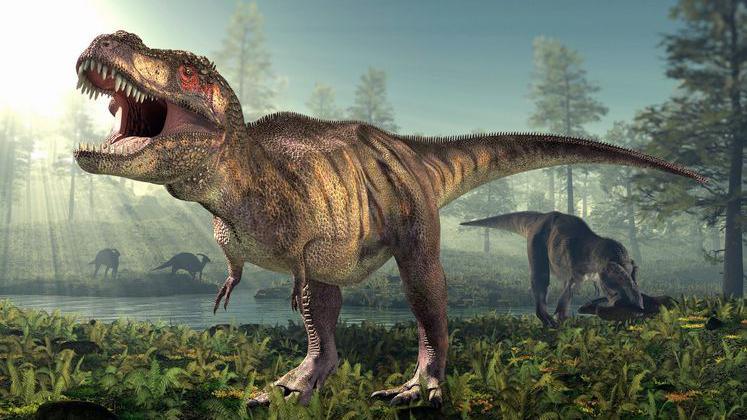Experts discover new tyrannosaur species in America

- Published
Experts in America think they may have finally settled a big debate that has been going on for decades.
Was a 67-million-year-old fossil, originally discovered around eighty years ago, a new Nanotyrannus species or a T. rex?
Scientists believe that new research has finally given them the answer.
Their findings show that the fossils are that of an adult Nanotyrannus dinosaur, not a young T.rex - and that the two species were actually very different.
More prehistoric discoveries
Dinosaur 'mummies' found - with scales and hooves!
- Published24 October
Ancient 'dragon' skeleton found on UK coast
- Published10 October
New ancient reptile crawls out of the past in Scotland
- Published1 October
What did scientists discover?

For years, dinosaur experts have been wondering whether the Nanotyrannus was it's own dinosaur species, or a teenage version of the T. rex.
A team of experts, from North Carolina State University and North Carolina Museum of Natural Sciences in America, decided to see if they could find out.
They took a closer look at fossil specimens of Nanotyrannus discovered in 1942, 2001 and 2006 in the US state of Montana.
They found that Nanotyrannus and Tyrannosaurus both were members of meat-eating dinosaur family called tyrannosaurs, but both species had different characteristics.
Nanotyrannus had more teeth, a crest in front of its eyes and a third finger - unlike its two-fingered relative, the Tyrannosaurus.
Co-author of the study, James Napoli, explained: "Nanotyrannus and T. rex are extremely different."
Nanotyrannus was a predator built for speed, with long legs, a long snout with blade-like teeth and strong arms.
Whereas the Tyrannosaurus was a huge predator that was built for strength, with an enormous head and thick, banana-shaped teeth and much smaller arms.
Paleontologist Dr. Lindsay Zanno, lead author of the study, added: "T. rex was a massive predator adapted to wielding incredible bite forces.
"Nanotyrannus was a slender, agile pursuit predator that could have run circles around the tyrant king."
The researchers also determined that the Nanotyrannus fossils had enough differences to be divided into two separate species - Nanotyrannus lancensis and the newly named Nanotyrannus lethaeus.
